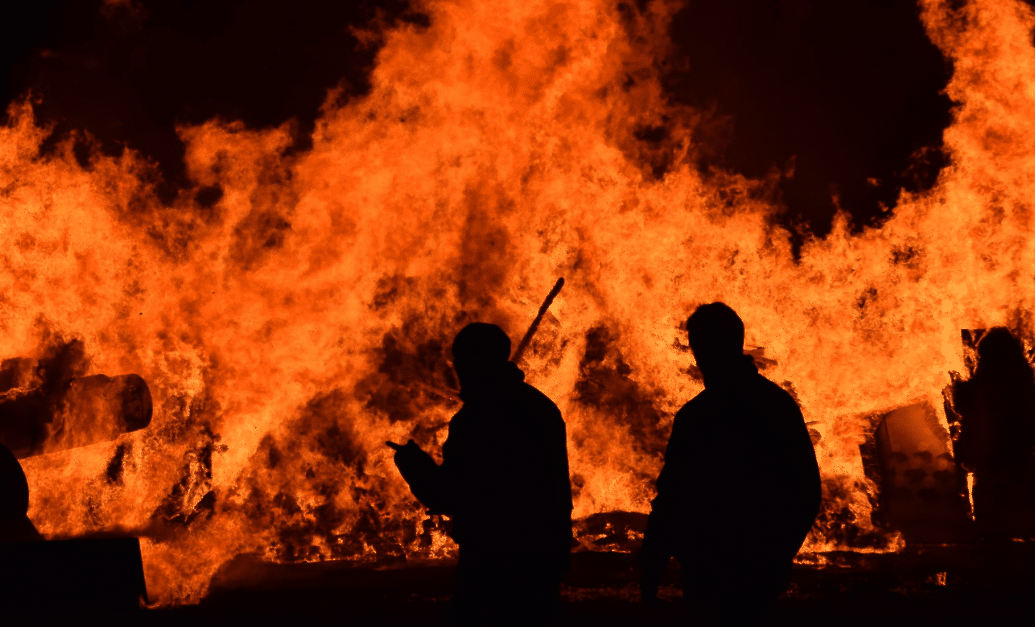Wildfires: Why GSOCs Need to Monitor This Ever-Present Threat

Wildfire season has begun in North America and is proving to be more active than normal, just as we’ve seen over the last few years. We’re seeing a combination of drought conditions, above-average temperatures and multiple wind events in areas like New Mexico, California and Washington creating the ideal environment for wildfires. New Mexico alone has had over 300,000 acres consumed with forced evacuations of thousands of residents.
At the Ontic Center for Protective Intelligence, we keep an ear to the ground for new concerns and emerging trends – especially for those working in the trenches and experiencing risks firsthand. I see more and more GSOCs and protective intelligence analysts focusing on wildfires — a topic often overlooked on the list of threats.
As a student of American history and protection, I’ve observed wildfires create havoc and chaos across many parts of America. Take the 2020 Bay Area fire for example which ripped through parts of California, Oregon and Washington (over 5 million acres of land burned and 35 people were killed) and the 2013 Yarnell fire in Arizona killed 19 firefighters. Other major wildfires have occurred in Yellowstone National Park, Michigan, Minnesota, Idaho and Montana.
The worst wildfire in Texas history occurred in Bastrop, Texas (near my hometown of Austin) in 2011. The fire spread to homes and businesses destroying Bastrop State Park and Lost Pines Forest. I think about this in light of the ever-growing Austin metropolis. As more and more companies and people relocate to the city, many know very little about the past and current wildfire dangers and the implications to employees and the business as a whole. (See Headwaters Economics for more wildfire resources.)
The Impact of Hoteling and a Dispersed Workforce
On a practical level, knowing where your employees and executives are on any given day is becoming a larger challenge as companies become more flexible with where people work. As staff start to stair-step their way back (some reluctantly which raises other concerns) the concept of “hoteling”, letting employees work from wherever they want inside office spaces raises interesting challenges. In the event of an emergency, evacuation or fast-moving fire, how do you know who to alert and how?
A Visitor Management System (VMS) can alert security teams to who is in the workspace even though you may not know where they are at the moment of the emergency. In case of fire, gas explosion, tornado, or active shooter, one of the first questions asked is ‘who was in the building?’ for search purposes.
Additionally, the pandemic caused many Fortune 1000 executives and employees to leave major cities and move to locations in rural America, which may lack water or fire department resources. Work-from-home issues also raise unique security concerns including the threat of wildfires and tracking employee proximity to them.
Understanding the Business Risk
According to a report by the Insurance Information Institute, this year’s wildfires are predicted to be severe. For example, the Santa Barbara, California Fire Department recently reported that multiple homes and commercial buildings were threatened by a wildfire. In 2020 the Austin American Statesman reported that “the likelihood of a megafire is just a matter of time” for the Austin area.
The ramifications these disasters have on commercial businesses can be significant. For example, Alert Media reported, “There are also far-reaching consequences to a wildfire. In the weeks following the 2017 Sonoma fire, California’s outbound shipments took a major hit—including an Amazon fulfillment center that was shut down near Sacramento. The freight and transportation industry in the region was brought to a halt, which ultimately created a ripple effect felt across the country.”
Thus, it’s important for security officers to understand the risks of wildfires as it pertains to their facilities and executives traveling. Smoke can also impact corporate air travel to locations in hot zones decreasing windows of time for arrivals and departures.
Incorporating Wildfires into Baseline Threat Assessments
Here are some important considerations and action items as you work to integrate the possibility of wildfires into your baseline threat assessment.
- Know the fire threat and hazard for your location. Some places in America run a higher risk of wildfires than others, e.g., Austin, Texas. Insurance Information Institute provides a good resource to help make sense of your wildfire threat.
- Know your first due fire department, their staffing and response times. Are they volunteer or paid? On duty 24×7? You may want to visit the local fire department to open up a liaison and information channel.
- Factor in fire as part of your baseline threat assessments including near vacation airports and secondary homes.
- Ensure that your GSOC or command post are monitoring wildfire alerts in/around facilities and executive travel. Have a protocol for notifications.
- Know your geography. Monitor alerts and local news and flee before the wildfires spread and make sure that you have secondary routes of travel, which may be problematic for rural estates and ranches.
- Ensure that the estate staff have brush trimmed away from the residences and structures and determine whether or not you need a man-made pool of water for fire department use in case of a fire due to a lack of fire hydrants.
- Think about tools and equipment like fire extinguishers, flashlights, smoke hoods and escape ladders.
- Keep a go bag in your escape vehicles.
- Keep smoke hoods in the bedroom, estate safe havens and for travel.
- Consider satellite phones for emergency communications for remote locations, travel, and rural estates.
- Conduct fire drills for executives and families (especially those with little kids) to include the identification of a rally point. Make the exercise fun. For example, I know one executive protection team that tied a Smokey the Bear poster on a tree to be used as a rally point for the children.
To read more about setting up or refining your baseline threat assessment, check out our whitepaper: The Role of Baseline Threat Assessments in Protective Intelligence.




